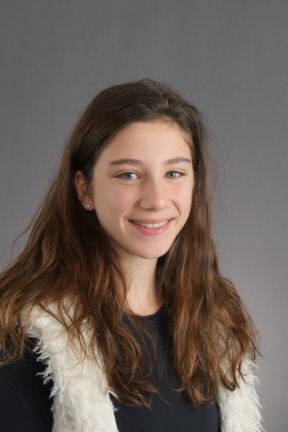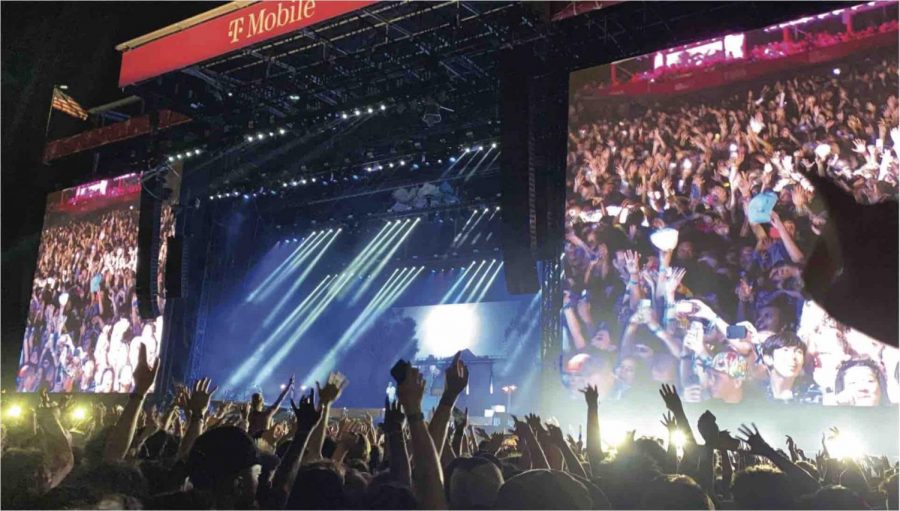Pandemic-Palooza?
Annual Chicago Music Festival Takes Place Despite Concerns
Photo credit: Sofia Brown
Crowds gather at T-Mobile stage during Lollapalooza. Photo courtesy of Sofia Brown.
Swarms of people in outfits ranging from jean shorts and a sports jersey to pieces of glittery duct tape gathered in Grant Park for four days during Chicago’s annual music festival, Lollapalooza. The dazzling get-ups weren’t the only thing catching Chicagoans’ attention this year. Many have criticized Chicago leaders for allowing the festival, fearing it would become a super-spreader event for the rising COVID-19 Delta variant.
Over 385,000 people joined in the festivities lasting from Thursday, July 29 to Sunday, August 1. Weeks later, Chicago health officials reported a total of 203 reported cases linked to Lollapalooza. According to CDPH Commissioner Dr. Allison Arwady, there is “no evidence” that the music festival was a super-spreader. Medical officials estimated that 88-90% of the crowd was fully vaccinated due to the required proof of vaccination or negative COVID-19 test result upon entry.
Mayor Lori Lightfoot said Lollapalooza was set to be the biggest festival in the world this year. Despite the criticism she faced for allowing Lollapalooza to happen, Lightfoot held strong in her opinion that due to high vaccination rates, it was safe enough to proceed. The mayor introduced a band named Black Pumas on opening day and thanked Chicagoans for “masking and vaxing up.”
“It was so weird to be back in such big crowds after a year of on and off COVID protocols,” junior Rania Jones said. She attended the festival all four days.
Visual Arts teacher and one of this year’s Lollapalooza staff members Nick Rupard shared a similar opinion to Jones, describing the event as “unsettling,” but that “in a way, you just had to trust the system and the vaccines.” According to Rupard, most of the crowd was unmasked while outdoors. Starting on day three, masks were required only indoors.
Rupard has been volunteering at festivals and music performances for nearly a decade. This year, he volunteered at Lollapalooza for 4-6 hours a day with Reverb, an organization dedicated to making concerts and festivals sustainable. His job included manning the hydration stations to promote the usage of reusable water bottles and helping run a trash-pickup system where attendees could exchange a garbage bag of litter for free merchandise.
Other organizations such as Rock & Recycle and Path Water partnered with Lollapalooza to help eliminate waste. According to the Lollapalooza website, 824,161 bottles were filled at the Hydration Stations and 1,770 people earned “festival swag” for keeping the park clean.
For those who didn’t feel comfortable attending the festival in-person, Hulu offered a livestream viewing option for their subscribers. Their 30-day free trial allowed people without a previous account to take part in the festivities as well. Many of the performers also arranged for livestreams available via their Instagram account.
With over 40 performances a day ranging from rap to drag shows to childhood favorites to heavy metal, there was something for everyone. The festival’s lineup highlighted the Foo Fighters, Post Malone, Tyler the Creator, Miley Cyrus, Marshmallow, Illenium, Journey, Megan Thee Stallion, and Roddy Ricch.
Previously included on the list was DaBaby, however the festival canceled his performance after recent homophobic remarks. “Lollapalooza was founded on diversity, inclusivity, respect, and love,” the festival said in a statement announcing the rapper was no longer performing.
Young Thug took DaBaby’s place on the Bud Light Seltzer stage. Yet another surprise performance took place a day earlier when Machine Gun Kelly made a surprise appearance with a last-minute set.
“This year’s performances really brought back the spirit of Chicago,” senior Mia Bronstein said. This year was her first time attending the festival. “It united the city in a way we’ve been missing for a long time.”








